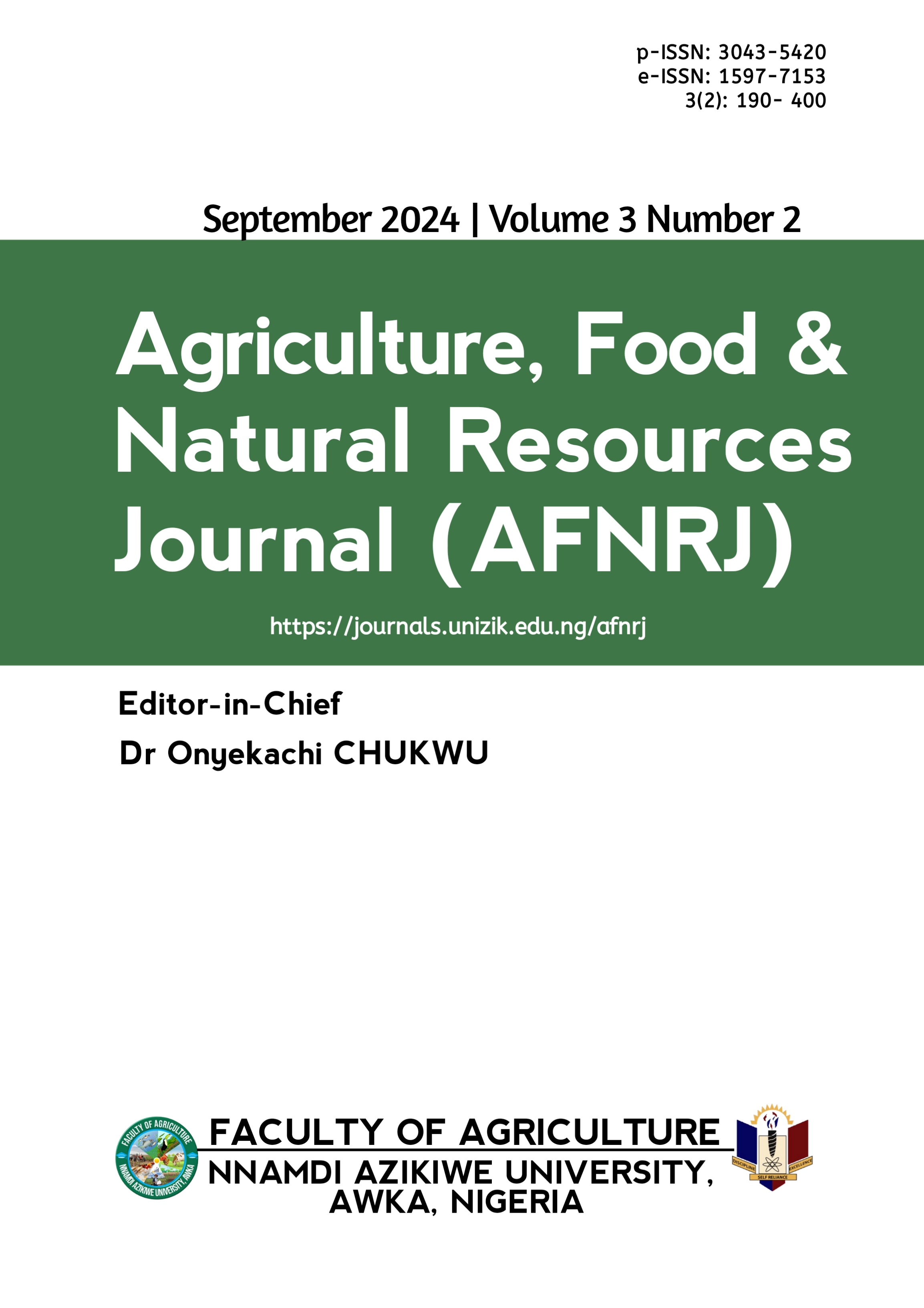Occurrence of parasitic nematodes infecting cucumber in Kwara State, Nigeria
DOI:
https://doi.org/10.5281/zenodo.14411844Keywords:
Abundance, Coordinates, Delineated, Prevalent, SurveyAbstract
Management of nematodes required identification and quantification of the plant parasitic nematode species causing infection so as to develop control strategies. The experiment was carried out to determine the abundance of plant parasitic nematodes associated with cucumber in Kwara State. Two hundred and fifty grams (250g) of rhizospheric soil were collected from 18 cm depth, and ten grams of root samples were collected from each of 20 farms across the four Agricultural Development Programme (ADP) delineated agricultural zones of Kwara State following the zigzag sampling technique for nematode extraction and identification. Nematodes were extracted using the Baermann technique and were counted using the standard nematode counting dish; also, soil samples collected from each zone were also exposed to soil tests. Data were analyzed using descriptive statistics. Ten plant parasitic nematode genera were identified, and the most prevalent was Meloidogyne spp. with a 7143.00/250 ml mean population density, followed by Pratylenchus spp, while the least was Rotylenchus spp. having a mean population density of 48.00/250 ml suspension. The study concluded that root-knot nematodes (Meloidogyne species) were the most abundant in cucumber-growing fields of Kwara State. Therefore, subsequent build-up of these plant-parasitic nematodes should be periodically monitored by plant nematologists because cucumbers are good hosts of plant-parasitic nematodes, and early observation of population increase will be checked before it gets out of hand.
Downloads
Published
Issue
Section
License
Copyright (c) 2024 Halimat Shola BABA, Nkechi Betsy IZUOGU, Kafayat Yemisi BELEWU, Oluropo Ayotunde APALOWO

This work is licensed under a Creative Commons Attribution 4.0 International License.
which permits unrestricted use, distribution, and reproduction in any medium, provided the original author and source are credited.
Authors retain the copyright of their published work in the AFNRJ.





